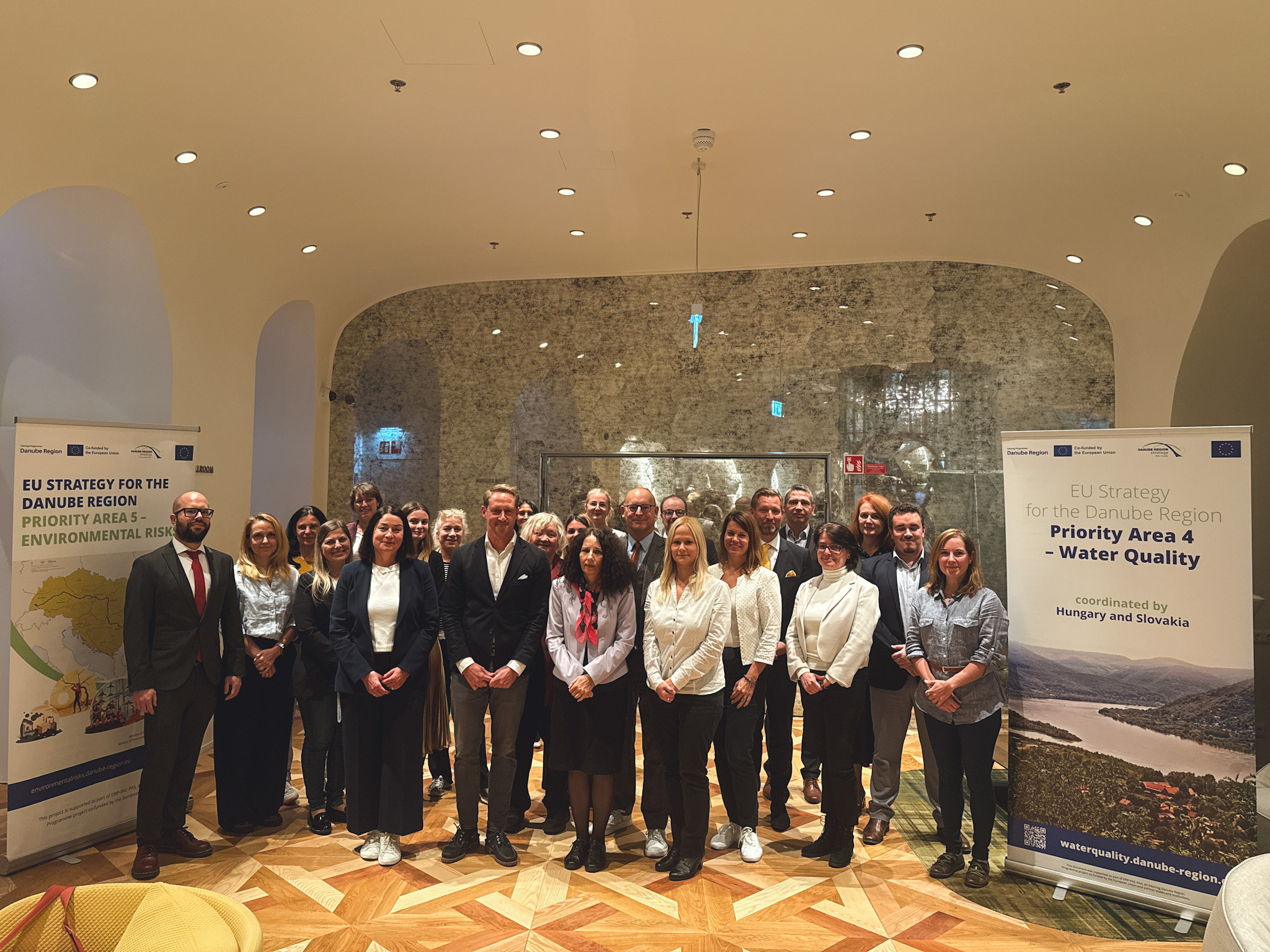On 8 October 2025, representatives of the EU Strategy for the Danube Region (EUSDR) Priority Areas PA4 (Water Quality), PA5 (Environmental Risks) and PA6 (Biodiversity) met in Budapest for a Joint Steering Group Meeting under the Pillar “Protecting the Environment.”
Hosted by Hungary, coordinator of both PA4 and PA5, the meeting brought together national coordinators, the European Commission (DG REGIO), the Danube Strategy Point, and international basin organisations such as the ICPDR, ISRBC and the GWP CEE .
Strengthening cooperation across themes and regions
The meeting aimed to strengthen cross-thematic cooperation and explore synergies between water quality, environmental-risk management and biodiversity protection.
Participants discussed how integrated approaches can better address the increasingly complex environmental challenges in the Danube Region — including droughts, floods, accidental pollution and ecosystem degradation.
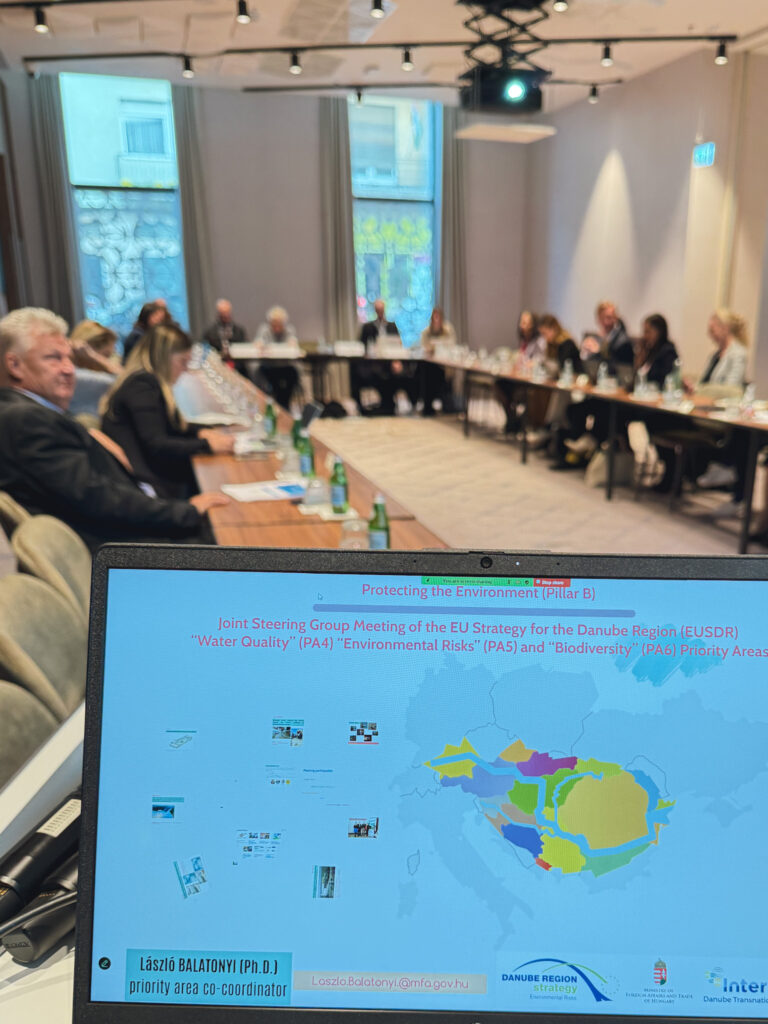
Beyond these professional objectives, one of the core goals of the EUSDR is to deepen cooperation with other EU macro-regional strategies.
In this respect, the Environmental Risks Priority Area ( PA5) of EUSDR plays a leading and exemplary role, maintaining active partnerships with the EU Strategy for the Baltic Sea Region (EUSBSR) and the EU Strategy for the Adriatic and Ionian Region (EUSAIR).
Through joint visibility at major events and continuous technical exchange, these collaborations showcase how macro-regions can jointly advance disaster-risk reduction, climate adaptation and water-resilience policies.
Within the EUSDR itself, the integration of PA4, PA5 and PA6 under Pillar B is both logical and essential: the interconnections between water quality, quantity and biodiversity demand coordinated action. The Budapest meeting thus stood out as a unique event, uniting all three areas in a single framework of dialogue and strategic alignment.
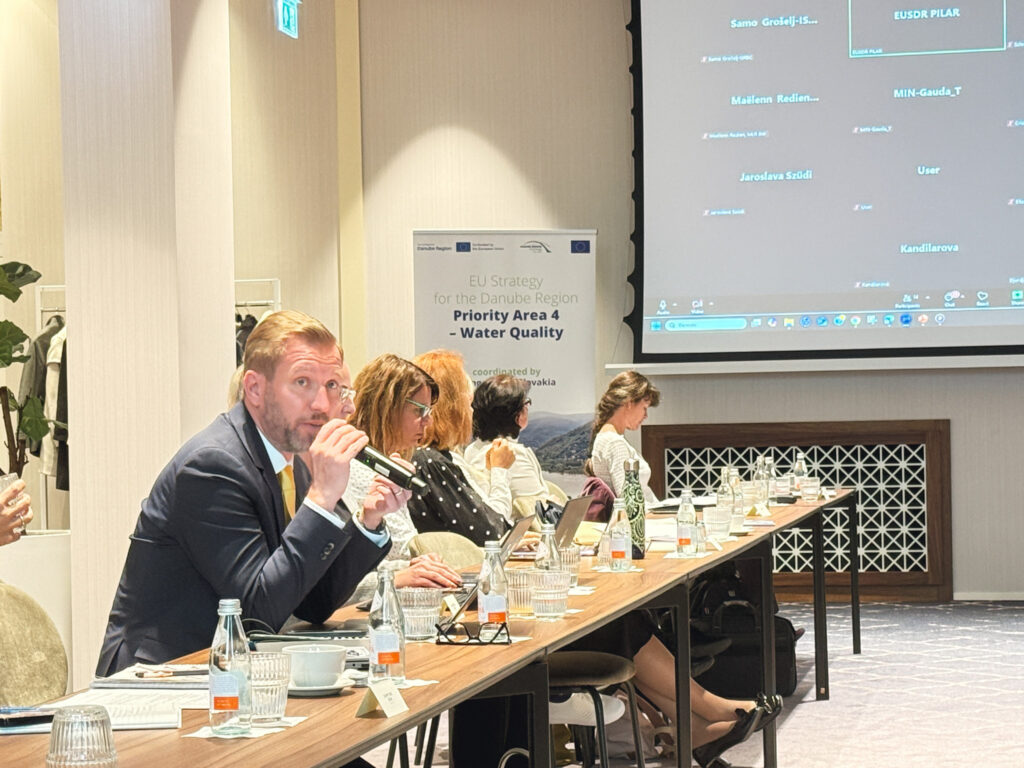
Morning session – Updates and strategic dialogue
After opening remarks by László Balatonyi (PA5, Hungary), Márton Pesel (PA4, Hungary), Florian Ballnus (PA6, Germany) and partner coordinators from Slovakia, Romania and Croatia, the Priority Areas presented their latest achievements and milestones since the previous meetings.
Institutional partners — DG REGIO, DSP, ICPDR, ISRBC & GWP CEE — shared strategic updates on current initiatives, governance developments and cooperation frameworks supporting EUSDR implementation.
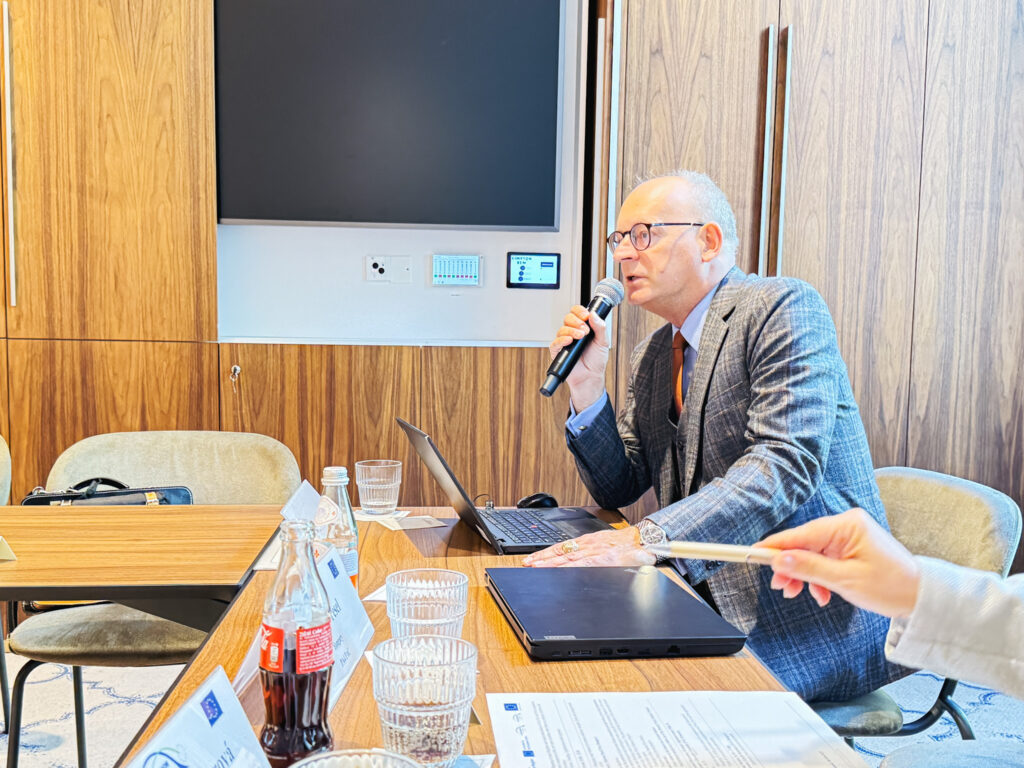
Afternoon – Cross-cutting cooperation and thematic focus
The afternoon focused on cross-PA synergies and flagship mapping, identifying overlapping themes and opportunities for coordinated action in the upcoming programming period.
A highlight was the interactive mapping exercise, coordinated by PA5, which examined thematic overlaps and stakeholder networks across Pillar B. It pinpointed areas where joint action can bring the highest added value — notably climate adaptation, nature-based risk reduction, joint forecasting systems and basin-level water-balance assessment.
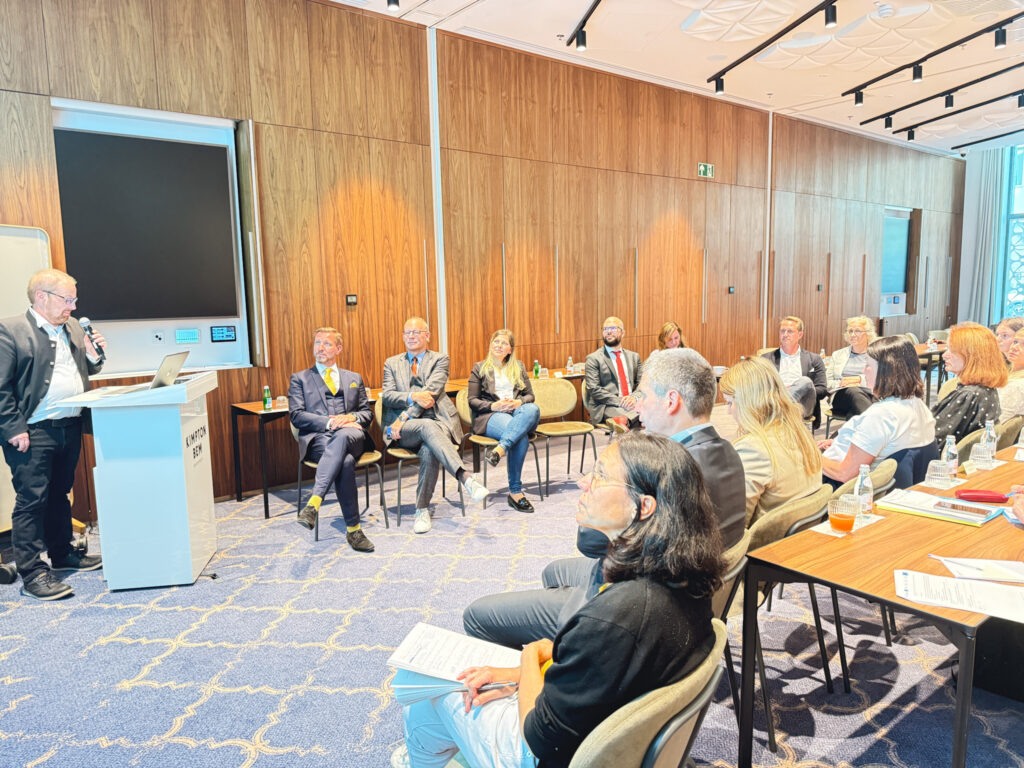
The panel discussion “Managing water balance in extreme conditions: droughts, floods and ecological needs”, moderated by Márton Pesel (PA4, Hungary), underlined the necessity of shared hydrological data and coordinated planning to respond to low-flow and flood extremes.
The closing strategic dialogue, led by László Balatonyi (PA5, Hungary), explored the future governance of Pillar B, the value of cross-sectoral approaches, and the need for consistent cooperation among the three environmental Priority Areas.
Protecting the Environment (Pillar B) perspectives and next steps
For PA5, the meeting confirmed its pivotal role in connecting science, policy and operational practice and in promoting a resilient, risk-aware approach to environmental management.
The Hungarian coordination was recognised for initiating an integrated basin-wide model that links water-quality protection, disaster preparedness and ecosystem restoration under one strategic umbrella.
Participants concluded that joint, knowledge-based, and transnational action is indispensable for tackling the region’s growing climate and environmental challenges.
Strengthened collaboration both within the EUSDR and across other EU macro-regional strategies will be key to safeguarding the Danube Region’s natural assets and ensuring its long-term resilience.
Written by: László Balatonyi Ph.D. (EUSDR PA5 HU PAC)




